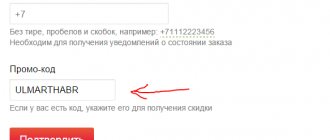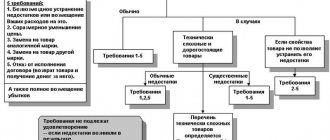In the previous article, we talked about 10 ways to prevent the delivery of low-quality goods under a contract. Now let's look at the specific actions of the customer - what he should pay special attention to, what documents to fill out and how to act in case of doubt.
When accepting goods, it is important to record the actions on paper or using photos. Representatives of the supplier and customer and invited experts must be present during this process.
The customer has the right to demand the presence of an authorized representative of the supplier when accepting the goods, and this is confirmed by the decision of the Vladimir OFAS Russia dated 08/05/2014 No. G 512-04/2014.
If the reception location is significantly remote, then the presence of a representative is ensured by issuing a power of attorney to the person who represents your interests (this person can be consulted by telephone).
Failure to ensure that a supplier's representative is present at acceptance will be considered a violation of the terms of the contract. In addition, the customer may refuse to accept the goods if there are complaints. There will be no one to submit written objections.
However, the customer is obliged to ensure the safety of the cargo without accepting the responsibilities of the owner. Refusal to accept may result in fines, penalties and unilateral termination of the contract.
If there are complaints about the quality of the product, you need to decide how you want to eliminate the shortcomings. If it is impossible to eliminate the shortcomings, you need to make a decision on unilateral refusal to fulfill the contract and follow the documentary procedures provided for by 44-FZ and 223-FZ.
Before signing the acceptance certificate:
- fill out the entry control report;
- check the accompanying documentation (certificate of conformity, quality certificate, other accompanying documents);
- evaluate the appearance, packaging and labeling of the product;
- If you suspect the presence of hidden deficiencies, conduct an independent examination.
What to do if the accompanying documentation is in doubt or discrepancies in the appearance of the goods have been identified?
- Refuse acceptance by photographing the goods and accompanying documentation (incoming inspection certificate, certificate of conformity, quality certificate).
- Make a note of the refusal of acceptance explaining the reasons for the refusal on your invoice and the supplier's invoice, but do not sign his invoice. Take a photo of both invoices.
- Ensure the safety of the goods (clause 1 of Article 514 of the Civil Code of the Russian Federation).
By order of the head of the organization, appoint a commission to re-accept the goods. The commission should include representatives of the buyer and seller. You can also hire an independent expert.
Based on the results of acceptance, you must either sign a document stating that you agree to accept the goods, or reject its acceptance. All stages of acceptance and verification must be accompanied by certain documents.
It is necessary to check the compliance of the delivered goods with the terms of the contract by requesting from the supplier accompanying documents confirming the quality of this product. Most often this is a certificate of conformity and a quality passport. These documents confirm the quality of the delivered goods, but do not guarantee it. Mandatory certificates are controlled by the state, but voluntary certificates cannot be verified without special knowledge.
That is why it is necessary to evaluate the external condition of the packaging and the labeling of the product. The appearance must meet the requirements of quality products.
Many counterfeit manufacturers, even at the stage of drawing up documents or labeling goods, cannot ensure that their products comply with GOST requirements.
If after inspection you begin to doubt the quality of the product, it is best to select samples and send them for examination. Any discrepancies in labeling, packaging or appearance must be documented. It is best to photograph the item and write down specific discrepancies. The supplier's representative must also sign this document.
After this, you need to officially appoint a commission to re-accept the goods. It may also include an independent expert that you have engaged. This commission will draw up all the necessary documents.
Examination: features of the conduct
There are three types of examination:
- examination of documentation;
- examination of the results of contract implementation by a third party;
- internal examination of the customer himself.
During the examination, it is necessary to check whether the procurement object meets the terms of the contract, and also pay attention to the quality and volume of goods supplied, services provided, and work performed.
Make sure that:
- the object of purchase has no defects;
- there is no damage to the purchased item (including packaging);
- the product lot is homogeneous;
- the expiration date has not expired;
- there are the necessary certificates.
Take into account the expert opinion when deciding whether to accept the results of the contract execution or not (Parts 3 and 7 of Article 94 of Federal Law No. 44-FZ)
Mandatory terms of the contract for the provision of expert services include:
- subject of examination;
- authority of the expert;
- conditions for admission to the examination (qualification of the expert and timing of the examination). The timing of the examination must correspond to the delivery time of the goods.
If an external examination reveals a violation of the terms of the contract, the customer is obliged to be guided by the conclusion of this examination and take measures provided for by law, up to and including unilateral termination of the contract. If an external examination reveals violations of the terms of the contract, the customer must decide what measures it will take against the supplier for violating the terms of delivery.
If any discrepancies are found during acceptance, you need to proceed to re-acceptance. If, as a result of the initial acceptance of goods, violations were identified, it is necessary to invite a representative of the supplier for re-acceptance by sending him a notification.
Invitation to inspect the goods
If an authorized representative of the supplier is not present at acceptance, the customer must send an invitation to the supplier to inspect the goods no later than 24 hours after discovery of defects.
The invitation contains the following information:
- name of the product, date of its shipment;
- numbers of shipping documents or acceptance documents;
- the quantity of damaged goods and its value, the nature of the damage;
- condition of the fillings;
- the time for which the joint two-way acceptance is scheduled;
- acceptance address;
- Contact details.
The invitation to participate in the re-acceptance of goods shall indicate:
- place and time;
- composition of the commission;
- information about low-quality products.
Is it possible to return substandard goods to the store?
What do stores and manufacturers do with substandard goods? From the manufacturer’s point of view, the costs of producing a standard and substandard product are the same. Substandard goods, which have obvious and hidden defects, are the result of violations in the technological process; as a result, you can receive an entire batch that does not meet the declared characteristics. The manufacturer has 2 main options:
- Dispose of the product.
- Sell it at a reduced price.
Upon disposal, the manufacturer will not only lose all the costs spent on the production of this batch, but will also pay extra for its destruction. The second option will allow you to return production costs or part of them, but customers must be informed of all defects, limitations and problems.
In some cases, large retail chains purchase goods in wholesale quantities. Any batch may contain one or more illiquid goods, and it is impossible to make claims against a specific manufacturer or supplier. As a result, the cost of defective and substandard goods is included in the cost of quality goods.
If this is not possible, the following options are available:
- Selling substandard goods at a reduced price.
- Repair with sale of goods.
- Return to manufacturer.
- Self-disposal.
If you plan to sell a product that does not meet the standard, the sales contract must reflect all the nuances and defects, as well as the amount of the discount. The buyer must read the contract and sign it. Selling substandard items in a store If the substandard condition is expressed in a damaged presentation, for example, there are chips or dents, the store may try to sell the product. There are always people who want to receive goods at the lowest price, regardless of the external defect.
A discount price tag is placed, usually the price for a product of poor quality is 30-50% lower than for a similar new one. Either on the price tag itself, or on a sheet of paper, the reason for the markdown is indicated separately, for example, a dent on the side wall. It is important that the buyer is aware of the presence of a defect. Here it is important to know what a substandard product means. Most of the substandard products are expensive and technically complex products - smartphones, tablets, laptops, cars. Many buyers do not risk purchasing such goods if they see that they are of poor quality: there is no guarantee that after repair the equipment will work perfectly, and subsequent repairs may cost the same amount for which the seller makes a discount.
Specifics of readmission
The fact of repeated acceptance must be recorded in the act in the TORG-2 form. Those goods for which no discrepancies in quantity and quality have been established are not listed in the acts. It is enough to make a note in the act: “There are no discrepancies regarding other inventory items.”
The fact of repeated acceptance is recorded in the invoice in the TORG-2 form. If the products are of foreign origin, then the TORG-3 form is used. Goods whose quality and quantity claims have not been established are not mentioned in this invoice. A note is made that there are no complaints about quality and quantity for other goods.
New consultations in the GARANT Consulting system
Inventory assets for which discrepancies in quantity and quality have not been established are not listed in the acts. A note about this is made at the end of the act with the following content: “For the remaining inventory items listed in the supplier’s accompanying documents, there are no discrepancies in quantity and quality.” This condition follows directly from the Instructions.
You may like => Term Garage Box
Thus, the buyer does not have the right to make any corrections to the primary documents (TORG-12) (cross out, enter any amounts). Corrections to documents must be made directly by the supplier. The basis for this is a written notification received from the buyer (in the form of a letter of claim, a report on identified discrepancies, inconsistencies, etc.).
If an actual non-compliance with the quantity or quality of the goods specified in the invoices and other accompanying documentation is detected, the acceptance of the goods is suspended and a report of non-conformity of the goods is drawn up, after which the received goods are placed in a warehouse or storage facility. In this case, it is necessary to ensure the safety and non-mixing of the goods with similar ones already accepted. The act of non-conformity of goods is drawn up in the required number of copies and certified by the signatures of members of a specially created authorized commission.
What act needs to be drawn up is determined depending on the type of goods received:
- The act in form No. TORG-2 is used when accepting domestic goods and is drawn up in four copies.
- The act in form No. TORG-3 is applied in case of receipt of imported goods and is drawn up in five copies.
Note!
A power of attorney on behalf of a legal entity is issued signed by its head or another person authorized to do so by its constituent documents, with the seal of this organization attached. The validity period of the power of attorney cannot exceed three years. If the term is not specified in the power of attorney, it remains valid for a year from the date of its execution. A power of attorney that does not indicate the date of its execution is void.
Date of dispatch of the goods from the point of departure or from the seller’s warehouse _______________________ _______________________________________________________________________________ Date of arrival of the goods at the point of destination _________________________________________________
Sample documents provided on this website are free of charge and are not subject to constant updating in accordance with changes in legislation. These documents are the basis for creating your document and are subject to mandatory verification for compliance with current legislation on the date of application of the sample.
Acceptance certificate
The act is drawn up in at least two copies - for the supplier and the buyer. It is stitched, sealed and signed by all members of the commission: the buyer, representatives of the supplier or manufacturer, and the expert. Photos of the act are sent to the rest of the commission members. If an acceptance participant fails to appear or a commission member refuses to sign the document, a note is made in the acceptance certificate.
A report is drawn up for everyone participating in the acceptance of samples, so that all participants can see that the product is marked with certain words and letters, that the packaging is in one condition or another, and that the product was found in one quantity or another.
All participants in the acceptance of goods retain the same documents with the signatures of all participants in the acceptance. If one of the commission members signs the act, a note about this is made in the act itself.
In the accompanying documents (railway waybill, waybill, invoice, invoice, etc.) for the received goods, a note is made about discrepancies discovered when drawing up the report. The act approved by the manager, together with accompanying documents, is transferred to the accounting department of the buyer’s organization. The accounting department calculates the amount of the claim.
In the accompanying documents, a note is made that after the initial acceptance, repeated acceptance took place and an act was drawn up in the TORG-12 form or a sampling act was carried out.
At the initial acceptance stage, the necessary marks must be placed on the invoice about all suspicious points that were detected. Often the invoice does not indicate the batch number of the delivered goods or its full range and there is no direct confirmation that, for example, the pipe was supplied along with a specific invoice, quality certificate and certificate of conformity.
The batch number, quality certificate number or certificate of conformity number can be manually entered into the invoice upon initial acceptance of the goods.
In what cases is it necessary to draw up a certificate of non-conformity of the delivered goods?
When accepting the goods, the responsible person is obliged to check its compliance with the accompanying documents. There are underweight, shortage, and misgrading; The product may not be of the expected quality or may partially or completely lose its properties.
If deviations are detected, according to Art. 513 of the Civil Code of the Russian Federation, you must immediately notify the supplier. Next, you need to draw up a report of non-conformity of the goods. The buyer may request a refund or replacement of the non-conforming product. A commission is appointed to draw up the act.
In which cases it is possible to unilaterally terminate a supply agreement without court, and in which cases it is necessary to go to court, find out from the Ready-made solution from ConsultantPlus. If you don't already have legal access, a full access trial is available for free.
How to write a letter of claim
The buyer draws up and sends a letter of claim or a decision on unilateral termination of the contract to the supplier along with a copy of the incoming inspection report and the TORG-2 form or an expert’s report (if an expert was involved).
These documents must indicate correct comments on the quality or quantity of the product and suggest ways to resolve the problem. After the act in form TORG-2 or another document has established the quantity of goods that does not meet the requirements of the contract, the buyer draws up and sends a letter of claim addressed to the supplier. The letter must list which products have complaints about quality and quantity and what the supplier must do to eliminate these shortcomings.
The claim letter and decision must include:
- name of the delivery document;
- date and place of document preparation;
- name of the organization on behalf of which the document was drawn up;
- a link to the supply agreement and the delivered goods (name, quantity, price, assortment, batch);
- a list of requirements to the supplier (refund of the amount paid, replacement of goods, elimination of deficiencies) to resolve the problem.
If you believe that it is impossible to eliminate the shortcomings, you can issue a unilateral refusal to perform the contract.
Certificate of acceptance of products (goods) for quality (Document Bryzgalin A
- Failure to comply with assortment conditions. Such a violation gives the buyer the right to return both part of the goods that are not suitable for the assortment, and the entire batch (Article 468 of the Civil Code of the Russian Federation).
- Delivery of incomplete goods. Failure to comply with the completeness condition may result in the return of the goods only if the supplier fails to comply with the buyer’s request to reduce the price or complete the complete set (Article 480 of the Civil Code of the Russian Federation).
- Delivery of goods beyond the deadline. However, goods with late delivery, the refusal of which the buyer did not notify the supplier in a timely manner, cannot be returned (Art.
Dear readers, the information in the article may be out of date, please take advantage of a free consultation by calling: Moscow, St. Petersburg or using the feedback form below. Share: FacebookTwitterVKontakteOdnoklassnikiGoogle+No comments CategoriesConsultation by phone: +7 (499) 9З8-50-92 (Moscow)+7 (812) 425-68-З9 (St. Petersburg)8800-500-27-29 ext 667 (Regions) All calls are free ×We recommend viewing the Legal Assistance Portal. To avoid misunderstandings between the parties, the finished text of the document is approved by each of them before signing.
What is unilateral termination of a contract?
Unilateral termination of a contract is a procedure that starts from the moment you send notice to the supplier of your intention to terminate the contract. With the help of a complaint, you can indicate your intention to obtain a fine from the supplier, but penalties provided for in the contract do not motivate the supplier as much as unilateral termination.
The unilateral termination procedure assumes that:
- the contract must necessarily indicate the terms of liability of the customer and supplier for non-fulfillment or improper fulfillment of the contract (Part 4, Article 34 of Federal Law No. 44-FZ), penalties and fines for violation of payment terms (Part 5, Article 34 of Federal Law No. 44 -FZ);
- if some conditions and obligations upon termination of a contract are not described in the procurement law, the Civil Code and federal laws apply - to the extent that they do not contradict 44-FZ;
- If inconsistencies are found during the examination, it is necessary to draw up a report of the identified violations.
How is a decision made to unilaterally refuse to perform a contract:
- Within 3 working days from the date of the decision to unilaterally terminate the contract, the customer places it in the Unified Information System and sends it to the supplier by registered mail with return receipt requested.
- If within 10 days the contractor manages to correct the violations, then the customer is obliged to cancel the decision on unilateral refusal to fulfill the contract that has not entered into force (Part 14, Article 95 of Federal Law No. 44-FZ).
- The customer’s decision to unilaterally refuse to fulfill the contract comes into force, and the contract is considered terminated 10 days from the date the customer notifies the supplier of the unilateral refusal to fulfill the contract (Part 13, Article 95 of Federal Law No. 44-FZ).
The procedure for unilateral termination of a contract is prescribed in Art. 95 44-FZ. It lists all situations where the customer has the right to terminate the contract unilaterally. The main condition is the delivery of goods that do not comply with the conditions of the procurement documentation, or the supplier’s non-compliance with the requirements set forth in the procurement documentation.
The contract must specify the terms of liability of the customer and supplier for failure to fulfill the contract. If some conditions and obligations are not specified in the contract, the Civil Code applies - in those parts where it does not contradict 44-FZ.
If violations are identified during the examination of the goods, it is necessary to draw up a report on the violations identified. After you have sent a decision on unilateral refusal to fulfill the contract to the supplier, it must be placed in the Unified Information System.
The supplier will have 10 days to eliminate any identified deficiencies. He can either replace the product or write a reasonable refutation of your claims. If the supplier does not take any measures within the established period and does not eliminate the identified violations, the contract is considered terminated, and you have the right to announce a new purchase using a simplified procedure in a shortened time frame.
Algorithm of actions when identifying violations of contract terms
The customer is obliged to make a decision on unilateral refusal to fulfill the contract if during the execution of the contract it is established that the supplied goods do not meet the requirements that were established by the notice and procurement documentation (clause 15 of article 95 of Federal Law No. 44-FZ).
44-FZ obliges the customer to make a decision on unilateral refusal to fulfill the contract if the supplied goods do not meet the requirements of the auction documentation, and gives the supplier 10 days to eliminate the identified violations.
If the supplier repeatedly delivers goods of inadequate quality, he can no longer eliminate the defects. If you repeatedly identify these violations, within 10 days after notifying the supplier of a unilateral refusal to fulfill the contract, the contract is considered terminated.
44-FZ does not oblige the customer to draw up claims or demands for elimination of deficiencies. You can immediately send a notice of unilateral termination of the contract, obliging the supplier to eliminate the identified violations as soon as possible. This allows you to quickly solve the problem of low-quality goods.
The customer is obliged to cancel the decision on unilateral refusal to perform the contract that has not entered into force if, within 10 days from the date of notification, the violation of the terms of the contract that served as the basis for making this decision is eliminated and the customer is compensated for the costs of the examination.
This rule does not apply in the event of a repeated violation by the contractor of the terms of the contract, which, in accordance with the Civil Code, are the basis for the customer’s unilateral refusal to fulfill the contract.
The customer is obliged to cancel the decision on unilateral refusal to perform the contract that has not entered into force if the supplier has eliminated the identified violations. This is beneficial for everyone: the customer receives his goods, the supplier avoids sanctions and receives payment under the contract on time.
How to distinguish substandard from marriage
How to classify a product as substandard or defective Let's assume that a product of inadequate quality arrives at the store. What is it - a substandard product or a defect? A product is considered defective if, after repair, the product cannot be used for its intended purpose. If the product is conditionally suitable for further use, for example, after repair at a service center, it is considered substandard. Defective goods must be disposed of, and substandard goods can be sold under various restrictions and conditions.
How does restriction of competition manifest itself?
When preparing procurement documents, care must be taken to ensure the quality of goods, but it is important not to overdo it or limit competition.
What violations do customers commit?
- The placement of unreadable and uncopiable materials is regarded as a restriction of competition. Even the WinRAR archiver is a paid program, so placing an archive in the .rar format is not entirely correct.
- All auction documentation must be placed in the Unified Information System in full. If some document is missing, a potential participant can complain to the FAS.
- In the technical specifications, the requirement to supply goods from a certain manufacturer must be accompanied by the words “or equivalent.” If there is no such amendment, the parameters to which the supplied product must comply must be clearly stated.
- It is impossible to establish a requirement that the supplier is not in the Register of Unscrupulous Suppliers. No such registry exists. There is a separate register of unscrupulous suppliers under 44-FZ and 223-FZ. It is impossible to demand that a participant not be on the register under 223-FZ if you are conducting a selection within the framework of 44-FZ and vice versa.
- It is unlawful to require delivery experience in a certain territory. All requirements related to the supplier’s experience in participating in auctions and government procurement are specified in 44-FZ and 223-FZ.
- It is prohibited to establish requirements that limit the circle of participants and do not confirm the quality of the work or services they perform.
- It is impossible to establish a requirement for ownership of the equipment, or that the work must be performed only on its own, without the involvement of subcontractors, or other restrictions that do not affect the quality of the work performed.
- It is incorrect to place requirements on the conformity of a product with specifications that are not publicly available, therefore membership in a certain self-regulatory organization cannot be required.
- The requirement to have a license for a certain type of activity must be enshrined in law and cannot be imposed at the request of the customer.
- Requiring only the manufacturer of the product to bid limits competition and discourages intermediaries who could potentially bid.









